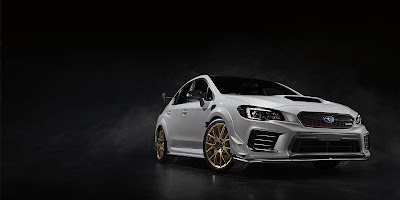The 2019 Jetta now included in the top 10 Coolest New Car
Under $20,000 and a 10 best Sedan Under $30,000.
The 2019 Jetta has been re-organized, from looks and style
to comfort and substance. Not to mention just the right amount of ambiance and
edge.
Let’s look
some deeper points:
R-Line
Its R-Line trim offers the Jetta as much sportier, from the
front grille and rear bumper to the black headliner and two-tone leatherette
seating surfaces. Also includes 17" R-Line alloy wheels and black exterior
mirrors.
LED headlights &
Daytime Running Lights
Its projector LED headlights with LED Daytime Running Lights
(DRL) bring a nice touch of style.
LED taillights
Sure, they look great, but that’s only part of the story. They’re
also efficient and long-lasting.
10-color customizable
interior ambient lighting
The first implementation for Volkswagen is the 10 colors of
ambient light and this available feature can change the mood inside instantly.
Colors include: white, black, red, orange, yellow, blue, sky blue, pink, teal.
Driver-focused
interior
It offers a driver-focused interior. You have never seen in
any sedan.
Ventilated leather
seating surfaces
Applicable for the front seats, these ventilated surfaces
help cool you down when the weather gets warm.
Heated seats
Not exclusively would you be able to remain warm on crisp
nights, yet so can your front traveler.
Two-tone V-Tex
leatherette seats
Accessible only on the R-Line, these two-tone seats feel
like cowhide and look extraordinary as well, because of Titan Black supports
and punctured Storm Grey supplements.
Fullscreen
navigation view
Accessible with the VW Digital Cockpit and Discover Media,
full-screen route see builds the size of the guide so it fills the whole
showcase and turns out to be much simpler to see. All things considered, you
shouldn't get lost doing whatever it takes not to get lost.
Safety cage
Front and back fold zones help assimilate crash vitality,
while an unbending security confine redirects it away from the driver and
travelers.
Intelligent
Crash Response System (ICRS)
In case of a crash that sends the airbags, the ICRS can kill
the fuel siphon, open the entryways and initiate the risk lights. It responds
in the event that you probably won't have the option to.
Automatic
Post-Collision Braking System
A few out of every odd crash carries a vehicle to stop. That
is the reason our vehicles incorporate the Automatic Post-Collision Braking
System. It can likewise help moderate the vehicle down after a crash, lessening
the opportunity of any extra effects.
Seven
stability-enhancing systems
For appropriate stopping power during a hard-braking
situation it takes the use of Electronic Brake-pressure Distribution (EBD) with
Electronic Stability Control (ESC), which can adjust engine throttle and apply
corrective forces to the wheels that want them most, your vehicle is furnished
with a sum of seven strength improving frameworks.
If you are thinking to buy this Volkswagen Jetta then visit Volkswagen dealer near you.





